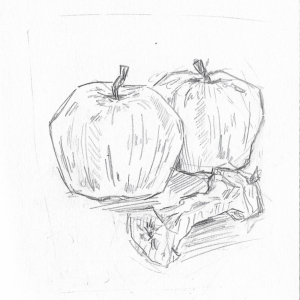How the Penny Press Precursed Pop’s Pointlessness
December 19, 2017
In the age of smartphones and bluetooth, radios are seldom used by younger people. The music played on the radio is often repetitive; radio stations seemingly shuffling the same ten songs every day for months on end. According to the New Yorker, most of the artists who are on the Billboard’s Top Forty list make their music on machines, not using real instruments. The most popular artists churn out songs in an almost unnatural way, and the question must be raised: Is it just to make a profit?
We can draw a comparison between this recent phenomenon of “machine produced music” and the penny press era in journalism that took place in the 19th century.
Throughout the 1830s, newspapers in the United States began to shift their focus from writing hard news stories about politics, war, and foreign affairs, to writing sensationalized news pieces about sex, scandal, and drugs. This era of journalism was known as the penny press era because papers were sold for, shockingly, one penny. This revolution was started by Benjamin Day, a journalist who founded The Sun—a New York City newspaper.
Even though Day’s idea was radical, his goal was fairly simple: He wanted to reach a larger audience in the U.S. and make sure that the poorer, low-education citizens (the “common people”) had an opportunity to access newspapers. At the time, newspapers normally cost six cents, and the reading material proved to be too complex for many American citizens. Shortly after the evolution of the penny press, other newspapers began to copy The Sun’s style of reporting, including the New York Herald and the New York Tribune.
Although he may have had pure intentions, Day compromised the standard of journalism with his penny press style. In order to sell thousands of tabloids, Day had to rely on human-interest stories. Stories often were subjective, and sometimes they did not even need to be fact-based to be published. In one 1834 edition, the paper published a story called “Moon Hoax” in which the “reporter” asserted that scientists had found life on the moon—this story was completely fictionalized.
Although this phenomenon happened nearly 180 years ago, this type of commercial entertainment is manifesting itself in today’s hit songs. Music is always evolving—the problem is that in today’s world, the evolution of music has plateaued and allowed artists like Taylor Swift to write songs that really have no place in music. “Look What You Made Me Do” is a prime example, with its repetitive and uninspiring lyrics and flat vocals.
According to Scientific American, a group of researchers conducted a study in 2012 where they took “a quantitative analysis of nearly half a million songs to look for widespread changes in music’s character over the years.”
Basically, what they found is that since the 1960s, the tone quality of songs has been in steady decline, which means that there is “less diversity in instrumentation and recording techniques.” Likewise, the basic pitches of songs have been stagnant.
Notes that were popular fifty years ago are still popular today, but artists have limited their vocal and musical ranges so songs often have repeating phrases. The only evolution that has been made recently is making music louder. The sounds and beats artists now drop in their songs are artificially produced by machines which stimulate their audiences but don’t tell a story or share a message that the audience can think about.
Pop artists today are not focused on producing moving ballads like “Purple Rain,” or writing about social conflict like “Strange Fruit” by Billie Holiday, but rather figuring out how to trigger their audiences so that for three minutes the listener is captivated by quick changes in volume and artificial percussion.
Like the penny press era of journalism, pop music is not trying to engage audiences on a deeper level. Repeated lyrics, machine-based sounds, and cliche music videos are like the sensationalized news pieces of journalists in 1830: The goal is to entertain rather than make people think.
This piece also appears in our December print edition.









